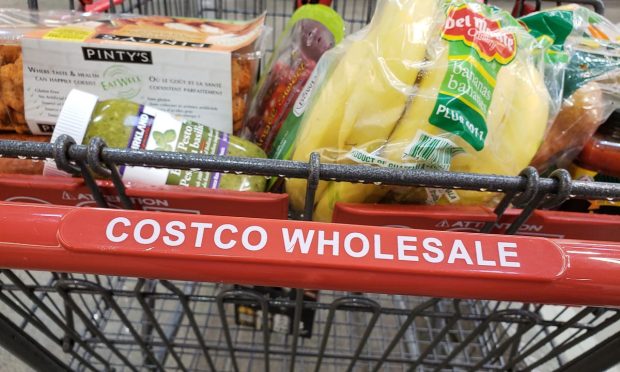Costco Leverages Prepared Food Demand to Drive Memberships Amid Inflation

Costco is drawing in customers amid inflation by meeting their demand for more affordable restaurant alternatives.
On a call with analysts Thursday (March 2) discussing the members-only warehouse chain’s second quarter fiscal year 2023 financial results, the retailer shared how its fresh food assortment has helped engage members even as consumers scale back on purchasing big-ticket items.
“If you go do a little homework on the cost of processing and selling a rotisserie chicken, our $4.99 price, we maintain, is an investment in low prices to drive membership and to drive sales in a big way,” Costco CFO Richard Galanti said. “We want those [kinds of] ‘wow’ items in there.”
Certainly, consumers are looking for more affordable alternatives to restaurant meals. Data from PYMNTS’ “Consumer Inflation Sentiment: Inflation Slowly Ebbs, but Consumer Outlook Remains Gloomy,” for which we surveyed more than 2,100 U.S. consumers, revealed that, in response to inflation, 78% of restaurant customers are eating at home more.
Plus, research from PYMNTS’ study, “Digital Economy Payments: Consumers Buy Into Food Bargains,” which drew from a July survey of nearly 2,700 U.S. consumers, found that 37% of consumers bought prepared food on their most recent grocery trip, up 7 points from the 30% of consumers who had done so back in November 2021.
Meeting this demand is especially important as consumers cut back on larger purchases.
“Big Ticket discretionary departments like majors, home furnishings, small electronics, jewelry hardware, these were down 15% in the quarter [in eCommerce, and] the same departments [were] down 11% in warehouse,” Galanti said.
According to data from PYMNTS’ study, “Consumer Inflation Sentiment: Consumers Buckle Down On Belt-Tightening,” which draws from a survey of more than 2,600 U.S. consumers, found that 66% are cutting down on nonessential retail spending, while a smaller share, 58%, are cutting down on nonessential grocery spending.
Indeed, even in the face of rising prices, consumers cannot afford to cut back much on food spending, though they are doing so where able. For this reason, retailers that offer foods at competitive prices such as Costco and other major chains have the ability to gain share of consumers’ total food spending and drive traffic, a trend also highlighted by grocery giant Kroger on its own earnings call Thursday.
“Our customers are looking for more ways to stretch their budget. The gap between food-at-home and food-away-from-home spending grew in the fourth quarter as more customers gravitated toward affordable meal solutions that restaurants simply can’t provide,” CEO Rodney McMullen said. “Our research shows that cooking at home is three to four times less expensive than dining out.”
These concerns will remain top of mind for some time to come. PYMNTS’ December study “Consumer Inflation Sentiment: In It For The Long Haul,” for which we surveyed more than 2,300 U.S. adults, finds that consumers on average believe it will take until June 2024 before inflation returns to 2021 levels. Moreover, about three-quarters of those surveyed are very or extremely worried about the U.S. economic situation.
